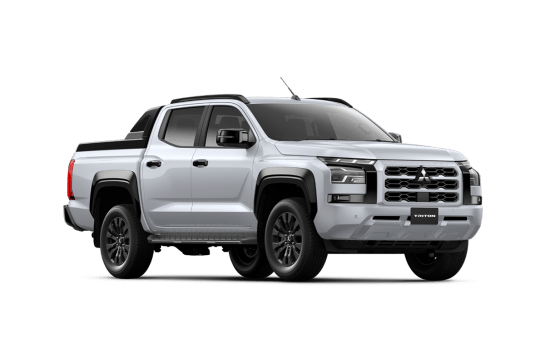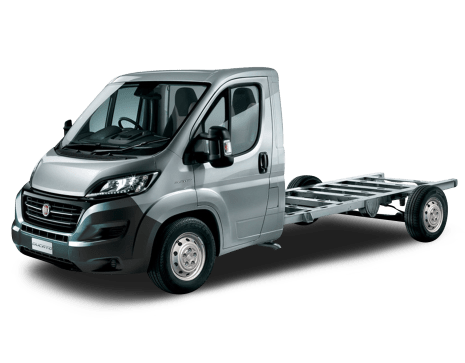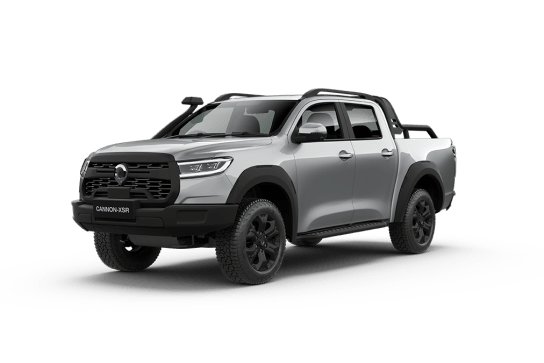
Mitsubishi Triton VS Great Wall Steed
Mitsubishi Triton
Likes
- New looks
- Smooth steering
- Super Select 4WD-II
Dislikes
- Tyres
- Tub liner should be standard
- Driver attention alert is overactive
Great Wall Steed
Likes
Dislikes
Summary
Mitsubishi Triton
The new-generation Mitsubishi Triton range was launched last year, marking the biggest change for the vehicle in a long time: a new bi-turbo engine (150kW/470Nm), overhauled design, new chassis and suspension (pushing towing capacity to 3500kg), and longer wheelbase, among a raft of changes.
Now, here’s the GLX-R, a new mid-spec variant in the Triton line-up. The GLX-R badge did exist in previous Triton generations, but the new version gets a few things, such as black alloy wheels, tailgate assist, and a leather-wrapped steering wheel, over and above current-generation lower-spec vehicles.
But much more importantly, it also gets Super Select 4WD II, which is only available in higher spec Triton variants.
Read more about
- Current Mitsubishi ASX is no more. Cut-price popular SUV's replacement confirmed: 2025 Mitsubishi ASX small SUV with potential hybrid power to ready for battle with the Hyundai Kona, Toyota Corolla Cross and MG ZS
- 'We plan to be here for another 40 years': How Mitsubishi plans to be a big player in the face of new competition such as BYD Sealion 6 and Shark 6 and without the Pajero Sport and Eclipse Cross and likely pricier ASX SUVs
- Watch your back Ranger Raptor, legendary badge could return to Australia: Mitsubishi to bring back the Ralliart with a potential Triton, Pajero Sport or Pajero hardcore 4WD
So, is the Triton worth your attention?
Read on.
| Safety rating | |
|---|---|
| Engine Type | 2.4L turbo |
| Fuel Type | Diesel |
| Fuel Efficiency | 7.7L/100km |
| Seating | 5 seats |
Great Wall Steed
While the popularity of diesel-powered dual-cab utes continues to grow and grow, the same can’t be said for those equipped with petrol engines, with less torque and higher fuel consumption blamed for their drooping sales.
Want proof? Even top-selling Toyota recently took the axe to the the 4.0-litre V6 petrol option in its local HiLux range as demand had become so small it could no longer be justified.
And so the few petrol-powered utes that remain, including Great Wall’s 4x2 Steed, are competing for a shrinking number of potential buyers. Which begs the questions; will the petrol-powered ute one day become extinct? And can the Great Wall Steed do anything to change that?
| Safety rating | |
|---|---|
| Engine Type | 2.4L |
| Fuel Type | Premium Unleaded Petrol |
| Fuel Efficiency | 12.7L/100km |
| Seating | 5 seats |
Verdict
Mitsubishi Triton7.4/10
The previous-generation Mitsubishi Triton makes a pretty good case as a solid all-rounder and a decent value-for-money purchase – but the new-generation Triton package is simply much better.
You can really see the value in the latest round of massive changes the line-up has undergone and those changes have brought the Triton closer to the top of the pack – it’s not quite there yet – but it’s very close.
The Triton is now the best iteration of this vehicle – refined, well equipped and nice to drive – and on the same level as the Isuzu D-Max, and drawing even closer to the likes of the Ford Ranger.
In GLX-R spec, the Triton strikes a nice balance between workhorse and weekend adventure machine.
Great Wall Steed6/10
If a low purchase price and cheaper servicing costs (if not fuel costs) are paramount, or you just have an all-pervading need to avoid slimy diesel bowsers and their oil-stained forecourts, then a petrol-powered 4x2 Steed could be worthy of consideration. Particularly when you take into account its generous menu of standard features.
And we’re darn sure that your local Great Wall dealer will offer you plenty more to get your business.
Would you consider purchasing a petrol-powered ute if the price was right?
Design
Mitsubishi Triton
The new Triton is 5320mm long (with a 3130mm wheelbase), 1865mm wide, 1815mm high, and it has a kerb weight of 2120kg.
This new-generation Triton looks far more imposing than previous Tritons with its stretched wheelbase, bulky front end with prominent grille, big wing mirrors and a taller stance overall.
The GLX-R also benefits from the illusion of more height off the deck because the side steps have been removed. Take it from me, a vertically challenged bloke, it’s a climb to get into the cabin.
Highway terrain tyres (Maxxis 790 Bravo (265/60R18 110H) are used on the GLX-R, rather than all terrain tyres. Higher-spec GLS and GSR Tritons also ride on highway terrain tyres, with the lower-spec GLX and GLX+ ride on all terrain tyres (265/65R17 112H).
This variant also gets a Mitsubishi-branded sports bar, which is pretty cool if you're into that sort of thing.
The Triton’s interior remains similar to other variants in that it has a basic but tidy layout and plenty of durable plastic surfaces. The GLX-R has cloth seats with silver stitching, and carpet flooring (with rubber floor mats in the test vehicle).
Great Wall Steed
The Steed is conventional in design with the usual body-on-ladder-frame construction riding on a generous 3200mm wheelbase, with double-wishbone front suspension and a leaf spring live rear axle. However, its rear disc brakes buck the trend of some major players that stick with drums. Turning circle is a comparatively large 14.5 metres.
The high floor height relative to the seats results in noticeably high knee/upper thigh angles in all seating positions. Head-, leg- and foot-room for rear seat passengers is also on the squishy side and not comfortable on long journeys. The much shorter length of the rear doors compared to the fronts also makes getting in and out of the rear seat a squeeze, particularly for larger passengers.
Poor perceptions of Chinese build quality were not helped during our test by the odd screw and plastic clip appearing on the cabin floor, for which we could not find their original locations.
Practicality
Mitsubishi Triton
The GLX-R’s cabin is well suited to work and play. As mentioned, there’s hard plastic surfaces everywhere, cloth seats, rubber mats, and carpet flooring. It's all designed to be able to cope with the wear and tear of everyday life.
All controls are easy enough to operate, easy to find, there aren’t any real annoyances here.
There's plenty of storage everywhere, including a handy deep open space above the glove box, and charge points up front, too (a USB-A and a USB-C).
The back seats are comfortable and supportive, with plenty of bolstering there.
Overall, the cabin is a bit on the Spartan side – there’s no frippery here, which is fine with me.
The Triton’s tub is 1555mm long, 1545mm wide, 1135mm wide between the wheel arches, and 525mm deep. Load height is 820mm.
The GLX-R tub has a hard plastic liner – but that’s an extra-cost accessory – and that seems adequately sturdy. The tub has four tie-down points at each corner of the cargo load space.
Our test vehicle has a soft tonneau cover, but that is also not standard on the GLX-R.
Otherwise, the rear cargo area is a usable space, and the GLX-R does benefit from the fact it has tailgate assist.
The Triton has an underlying full-size alloy spare beneath the tub.
Great Wall Steed
The 4x2 Steed has a relatively light kerb weight of 1722kg, which is a substantial 178kg less than its 4x4 diesel stablemate (1900kg). This is also reflected in the 4x2’s GVM of 2732kg, which although being 188kg less than the 4x4, still allows a genuine one-tonne-plus payload of 1010kg. This is only 10kg less than the 4x4’s limit.
Its 4732kg GCM means it can carry maximum payload while towing up to 2000kg of braked trailer, which is a more practical ‘real world’ compromise than some one-tonners with higher peak tow ratings.
Like most utes, the Steed 4x2 does not have enough width between its rear wheel arches to carry a standard Aussie pallet, but its fully-lined cargo bed offers more than one cubic metre of load volume with four well-placed D-shackles for securing loads.
Cabin storage options for front seat occupants include a bottle holder and two storage pockets in each door. Plus there's a single glovebox and centre console featuring a padded lid box at the rear which doubles as an arm rest, two central cup holders and a storage cubby up front. There’s also a curious sunglasses holder to the right of the driver’s head that's too small to close with a pair of sunnies inside.
There are no bottle holders, cup holders or door storage pockets for rear seat passengers, who only get slim storage pockets on the rear of each front seat.
Price and features
Mitsubishi Triton
The Mitsubishi Triton GLX-R is a five-seat dual-cab ute and it has a base price-tag of $56,740 (excluding on-road costs).
Our test vehicle is equipped with electric brake controller with harness ($850), rubber mats with low edge ($125), an under rail tub liner ($750), a tow bar kit ($1450), a soft tonneau cover ($900) and a 50mm chrome towball ($42), all adding up to a total of $60,857 (excluding on-road costs).
As standard, this Triton’s features list generously includes an 9.0-inch multimedia touchscreen system (with wireless Apple CarPlay and Android Auto), a 7.0-inch multi-function display, manually adjustable front seats with heating, fabric upholstery, a 360-degree camera system, dual-zone climate control and a refrigerated centre console and more.
It also gets a leather-wrapped steering wheel, black 18-inch alloy wheels, Super Select 4WD II and a rear differential lock.
The GLX-R’s black sports bar and tailgate assist – both genuine accessories – are fitted at the factory.
Exterior paint choices include white or red (both at no extra cost), or Impulse Blue, Blade Silver, Graphite Grey or Black Mica will each set you back $740.
Great Wall Steed
The 4x2 Steed, like its 4x4 stablemate, is available only as a dual-cab ute, but it does offer a choice of 2.0-litre, four-cylinder diesel (the only engine offered in the 4x4), or with a 2.4-litre, four-cylinder petrol engine. Our test vehicle was equipped with the petrol engine, which is only available with a five-speed manual (the diesel version comes with a six-speed manual).
At $25,990, the rear-wheel-drive Steed offers a considerable saving over the cheapest petrol model in Toyota’s HiLux range; the Workmate dual-cab ute with a 2.7-litre petrol engine and five-speed manual ($30,690). However, the savings are much less when measured against Nissan’s Navara equivalent, which, in entry-level DX form and with a 2.5-litre petrol engine and six-speed manual, costs $26,490.
What the Steed’s Japanese rivals lack in standard features is balanced somewhat by their need for regular unleaded (the Steed needs premium), and the fact they both have superior power and torque figures, which are important considerations for these work-focused vehicles.
The Steed’s standard equipment list is one of its strong points, as all variants - no matter which engine or drivetrain you choose - come loaded with the same serving of eye candy and creature comforts that can only be dreamt of in Japanese rivals at this price.
Chrome body highlights include grille, roof racks, door handles and side body protection mouldings. Plus there’s a classy-looking stainless steel sports bar and door scuff plates, plus full-length side steps, a cargo bed liner and 16-inch alloy wheels with 235/70R16 tyres and a full-size spare.
The cabin’s fully carpeted and leather-appointed trim includes cowhide on the steering wheel and gear-knob. The driver gets a six-way adjustable powered driver’s seat, and both front seats are heated. There’s also electric-folding door mirrors with demisters and indicators, a six-speaker sound system with touchscreen controls and Bluetooth, and an excellent tyre-pressure monitoring system to name a few.
Options include a tow bar, tonneau cover and sat-nav with reversing camera. We might sound greedy, but the rear-view camera should be standard, too.
Under the bonnet
Mitsubishi Triton
The Mitsubishi Triton GLX-R has 2.4-litre four-cylinder bi-turbo diesel engine, producing 150kW at 3500rpm and 470Nm at 1500-2750rpm.
It has a six-speed automatic transmission and a full-time dual-range four-wheel drive system, Super Select 4WD-II.
This is an impressive combination – not particularly exciting or dynamic, but it’s smooth, and offers a decent amount of torque across a wide rev range for 4WDing.
It has selectable drive modes which include Normal, Eco, Gravel, Snow, Mud, Sand, and Rock.
Great Wall Steed
The 4G69S4N is a Mitsubishi-sourced engine featuring a cast iron cylinder block, aluminium SOHC multi-valve cylinder head, multi-point fuel injection and MIVEC variable valve timing technology. In this work-focused specification it produces 100kW at 5250rpm and 205Nm at 2500rpm - which are not big numbers for a one-tonne-plus payload.
The five-speed manual has a slightly shorter top gear ratio than the diesel’s six-speed manual (petrol 0.857 vs diesel 0.838) and slightly shorter final drive ratio (petrol 4.55 vs diesel 4.10), which is biased towards heavy-load hauling. However, it also means higher engine rpm at highway speeds. Needless to say, an automatic option would greatly increase the Steed’s showroom appeal.
Efficiency
Mitsubishi Triton
The Mitsubishi Triton GLX-R has an official fuel consumption of 7.7L/100km (on a combined cycle).
I recorded 9.2L/100km on this test. I did a lot of high- and low-range 4WDing and the Triton was never working hard.
The Triton has a 75L fuel tank so, going by my on-test fuel-consumption figure, you could reasonably expect a driving range of about 815km from a full tank.
It also has a 17.0-litre AdBlue tank.
Great Wall Steed
The Great Wall’s combined figure of 9.0L/100km is identical to the diesel figure. This raised our eyebrows, given that petrol engines tend to drink more. Our hunch proved correct, with our real-world driving figures taken from fuel bowser and trip meter readings coming in at 11.8L/100km. Based on these figures, you can expect a driving range from its 70-litre tank of just under 600km.
Driving
Mitsubishi Triton
On sealed surfaces, the Triton is punchy off the mark if you pressure it, and it’s surprisingly smooth and refined at highway speeds, simply trucking along.
A new chassis frame, redesigned suspension, longer wheelbase, and wider wheel track, all contribute to the Triton exhibiting more controlled and comfortable ride and handling than ever before.
With its new suspension design – high-mounted double wishbone with coil spring and stabiliser bar up front and leaf springs at the rear – the Triton feels more settled and composed, more sure-footed on bitumen roads and gravel tracks, in terms of ride and handling.
The power-assisted steering offers a light but precise feel, the engine has a quiet refinement about it, and the six-speed auto is clever enough to not warrant any legitimate criticism.
So, getting to and from your favourite 4WDing track or campsite is a whole lot more comfortable now than in previous Tritons. But how does this new bigger Triton go when it comes to low-range 4WDing?
Well, it's actually quite impressive.
The previous-generation Triton had a shorter bonnet, so driver visibility when you are 4WDing is a whole lot better because the new-generation Triton has quite a substantial bonnet, so your vision forward of the vehicle is somewhat impaired, but that is rectified, to a certain degree by a 360-degree camera, and that will operate while you are low-range 4WD or driving at low speeds.
That camera gives you a view to the side and rear of the vehicle and, more importantly, to the front of the vehicle so you can maintain your correct line on the track.
The Triton has strong and sharp throttle response, which is very handy while 4WDing when you need to instantaneously tap into that torque.
The GLX-R benefits from having Super Select 4WD-II onboard, which lower-spec variants do not get it.
I’ve sung the praises of this system many times before and it constitutes a major and crucial point of difference that Tritons or Pajero Sports (equipped with this system) have with their rivals.
Super Select 4WD-II adds an extra element of safety and sure-footedness to driving. Via a dial to the rear of the auto shifter, you can switch from 2H into 4H (four-wheel drive, high-range) to give you the best traction possible in traction-compromised situations (i.e. rain-soaked blacktop, rough back-roads or dirt tracks peppered with loose rocks and potholes).
There's no risk of transmission wind-up when 4H is engaged in the GSR because the centre diff remains open.
Then turn the dial to 4HLc (four-wheel drive, high-range, locked centre diff) and you're ready to take on more difficult terrain but at lower speeds, because now the centre diff is no longer open.
If you want to tackle even more difficult terrain than high-range 4WD territory, turn the dial to 4LLc (four-wheel drive, low-range, locked centre diff) and the Triton has the opportunity to excel in low-speed, low-range four-wheel driving.
This Triton also has a rear diff lock, which is engaged/disengaged via a button in front of the shifter and this further helps you to comfortably maintain safe forward momentum.
The GLX-R also has selectable off-road modes, including Gravel, Sand, Mud/Snow (when in high-range 4WD) and Rock (when in low-range 4WD). Each of these modes adjusts engine output, transmission settings and braking, the aim being optimal traction to suit specific conditions and terrains.
This new-gen Triton is a bigger vehicle with a longer wheelbase and a turning circle of 12.4m, so it doesn’t feel as nimble on bush tracks as the previous Triton.
And because of its size, you do have to drive this new-generation Triton with more focus than you might've gotten away with in the old Triton simply because it now takes up more space on the track than it ever has before.
The Triton’s ground clearance (a listed 228mm) and off-road angles – 30.4 degrees approach, 22.8 degrees departure and 23.4 degrees rampover – all check out and are standard for a ute of this kind, however, the Triton does feel low and vulnerable to scraping that underbody on rocks, sticks, tree roots, etc.
It does have what Mitsubishi describes as “heavy duty” underbody protection (there’s a plastic bash plate towards the front of the vehicle and a steel bash plate behind that). That underbody protection does seem quite substantial, but I wouldn't rely on those to cop severe punishment.
The rear diff housing also seems prone to copping a solid knock or two, especially if you're tackling some hard-core rock-climbing, steep hills or severely rutted downhill crawls.
The GLX-R does not have side steps, which makes it look and feel a bit taller off the deck, but that does mean that if the vehicle tips to the side at a severe angle – for example, while driving through a deep high-sided rut – the bottom edge of a door or the bottom of the chassis may take the full brunt of the hit, rather than a sidestep copping the worst of the knock.
Another niggle – and it's a trait of most contemporary 4WDs straight out of the showroom – is the fact that the GLX-R gets a set of tyres – Maxxis 790 Bravo (265/60R18) – that are better suited to the highway than they are to any even mild 4WD terrain. However, it’s easily remedied: just swap in a set of decent all-terrain tyres – go as gnarly as you want – and that will make this capable 4WD even more capable.
Otherwise, all the good stuff is here: the mechanicals (Super Select 4WD-II etc.), the off-road traction control system is well calibrated, and the rear diff lock is easily engaged and disengaged at the press of a button.
Towing capacity is 750kg (unbraked) and, worth noting, is the Triton’s braked towing capacity has increased to 3500kg (up from 3100kg), bringing it up to par with its dual-cab rivals.
Kerb weight is 2120kg, maximum payload is 1080kg, GVM is 3200kg, and GCM is 6250kg.
Great Wall Steed
You don’t really notice the 4x2’s lighter kerb weight, which is probably due to the petrol engine’s smaller power and torque figures compared to the diesel. Ride quality around town and on secondary bitumen and gravel roads when empty or lightly loaded is adequate, if a tad harsh in the rear, which admittedly is a common trait in leaf-spring dual cabs with one-tonne ratings. Like the 4x4 version, the steering weight is too light and linear in feel regardless of road speed and the gearing is too low, requiring excessive steering wheel rotations.
The shallow foot wells, that result in higher knee and upper thigh angles as previously mentioned, concentrate more upper body weight on the base of the spine. This driving position also puts your knees closer to the steering wheel which can hamper turning at times, particularly for tall drivers. The edges of the console (left) and door trim (right), which the driver’s splayed legs naturally rest against, could do with more rounded edges or padding for greater comfort.
For our GVM test we forklifted 830kg into the cargo bed, which, with the optional tow bar and 100kg driver, was a payload of 960kg - or 50kg less than its 1010kg rating.
The rear springs compressed only 38mm, which was less than the 4x4 version (51mm) under a similar load and was probably due to the 4x2’s lower kerb weight. The front rose 16mm, which was splitting hairs with the 4x4 (17mm). The ride quality improved noticeably but the engine felt a bit sluggish around town, requiring plenty of revs and clutch slip when getting underway from standing starts.
At highway speeds, the limitations of the five-speed gearbox and shorter diff ratio became apparent with the tacho showing 2800rpm at 100km/h and 3000rpm at 110km/h. Although maximum power is at 5250rpm, the engine felt like it was revving too hard for comfortable cruising and almost begging for another gear to drop at least 500rpm at these road speeds.
The excellent tyre-monitoring system provided real peace of mind with such a heavy payload on board, as each tyre’s pressure and temperature could be closely watched. We reckon every hard working ute should have this.
The engine’s lack of low-down torque was noticeable on our set climb, as diesel-powered utes under similar payloads usually pull third gear at 60km/h all the way to the top of the 2.0km, 13 per cent-gradient climb. However, with its peaky petrol engine, the Steed just couldn’t pull third, so a quick shift back to second found its harder-revving (and noisier) sweet spot at 3800rpm, which allowed it to competently 'power' its way to the top. With an emphasis on 'power' as opposed to low-down torque, which is in short supply.
Safety
Mitsubishi Triton
The Triton GLX-R has the maximum five-star ANCAP safety rating from local testing in 2024.
As standard it has eight airbags (driver and front passenger airbags, driver knee airbag, centre airbag, driver and front passenger side airbags, and curtain airbags) and driver-assist tech includes AEB, adaptive cruise control, blind-spot monitoring, lane-keeping assist, driver attention alert (it's annoying), front and rear parking sensors, a 360-degree camera and more.
Great Wall Steed
Only two stars out of a maximum five-star ANCAP rating needs prompt attention. In the meantime, active safety features include Bosch electronic stability control with traction control, brake assist and hill start assist, but no AEB. Audible rear parking sensors come standard but a rear-view camera is optional.
Passive safety includes dual front, front-side and curtain airbags, and ISOFIX child seat anchorage points on the two outer rear seating positions. There’s also a child seat top tether for the centre rear seating position and a three-point seat belt for a passenger, but no centre head rest.
Ownership
Mitsubishi Triton
The Triton is covered by Mitsubishi’s near market-leading 10 year/200,00km warranty, as long as you have it serviced at an authorised Mitsubishi dealership. If not, you get half the coverage.
Servicing is scheduled for every twelve months or 15,000km and, under Mitsubishi’s capped-price servicing, each of the first 10 services costs $390.
Great Wall Steed
There is a three-year/100,000km warranty with three-year roadside assistance on offer. Service intervals and recommended (not capped price) servicing costs start at one month/1,000km ($138) then six months/10,000km ($166), 12 months/20,000km ($283), 18 months/30,000km ($166), 24 months/40,000km ($751), 30 months/50,000km ($166) and 36 months/60,000km ($283).



























